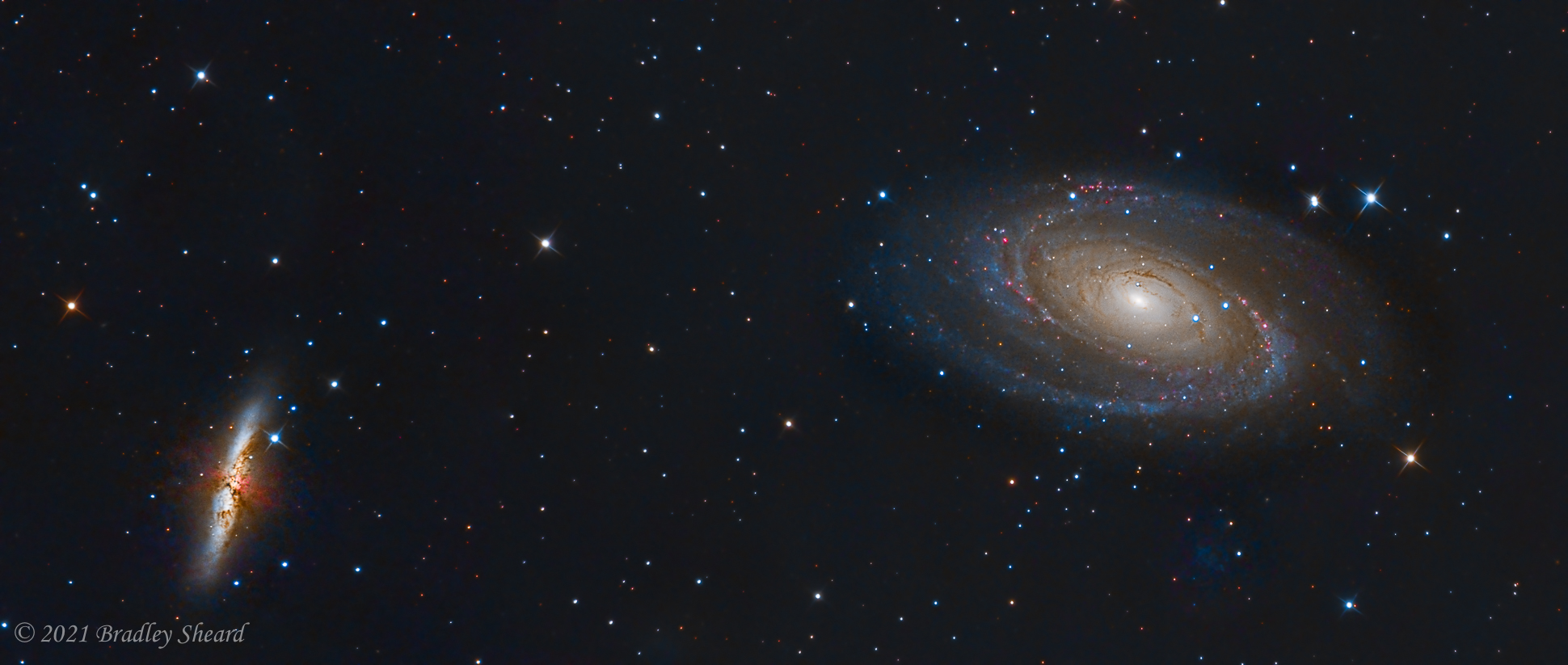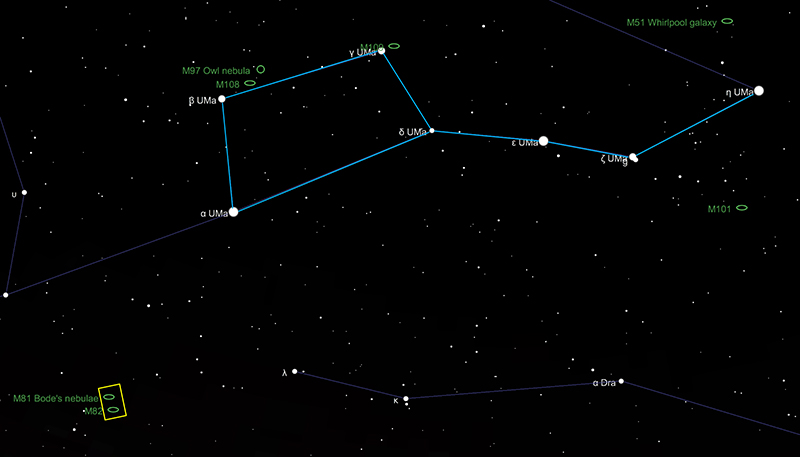Galaxies M81 (Bode's Nebula) and M82 (Cigar Galaxy) | ||
| « Previous | Back to Astrophotography Gallery | Next » |
M(essier) 81 (also known as Bode's Galaxy or Nebula, below right) is a "Grand Design" spiral galaxy lying in the constellation Ursa Major ("The Big Dipper"). Lying approximately 12 million light years away, M81 is one of the larger nearby spiral galaxies, ranking behind the Andromeda and Triangulum galaxies, and is roughly the same angular size as the full moon (but much dimmer!). M81 has a supermassive black hole in its core with an estimated mass of 70 million solar masses. The spiral arms of the galaxy contain many young, hot blue stars, giving them a distinctively different color than the core, which contains older, redder stars. There are also dark dust lanes visible in the outer regions of the core, as well as some red H-alpha regions in the spiral arms. M(essier) 82 (sometimes called the Cigar Galaxy, below left) takes on an entirely different appearance from our vantage point. Classified as an Irregular Galaxy, it is in fact a spiral galaxy seen "edge-on" from our perspective. In 2005 a set of spiral arms was discovered (Reference 1) in infrared wavelengths that are buried in the more familiar optical wavelengths. M82 is considered to be the proto-typical example of a "starburst galaxy." The central region of the galaxy's core is experiencing a tremendous burst of star formation, on the order of 10-100 times the average rate of star formation occuring in the Milky Way galaxy. This star formation drives galactic superwinds, carrying gas out of the galaxy, which can be seen in optical wavelengths as the excited hydrogen (red) filaments that appear to be bursting outward from the center of the galaxy and perpendicular to its disc plane. The starburst activity is believed to have been triggered by a gravitational interaction with neighboring M81 at some time in the past. | |||
 | |||
| The galaxy pair M81 (right) and M82 (left) in the constellation Ursa Major. (click on the image for a higher resolution version) | |||
| Optics: | 8-inch Ritchey-Chretien telescope | ||
| Camera: | QHY268M CMOS camera | ||
| Exposure info: | RGB 20 x 300 sec per filter per frame / 2-frame mosaic | ||
| Filters used: | Astronomik RGB and Optolong L-Pro light pollution filter | ||
| Date: | May 2021 | ||
| Processing: | Pixinsight-->Photoshop-->Topaz deNoise AI-->Lightroom | ||
| Below is a link to an earlier (DSLR) effort at imaging this galaxy pair: | |||
| Early M81 and M82 | |||
 | The constellation Ursa Major, also known as the Great Bear as well as the popular name Big Dipper, is located near the north celestial pole. The view at left shows the basic form of the constellation, with the approximate outline of the images above shown as a yellow rectangle. |
| Plot Credit: The Sky Live | |
| The Sky Live |
REFERENCES
1. Mayya, Carrasco and Luna, "The Discovery of Spiral Arms in the Starburst Galaxy M82." The Astrophysical Journal, 628, L33-L36, July 3, 2005.